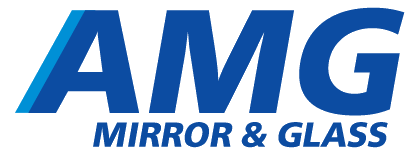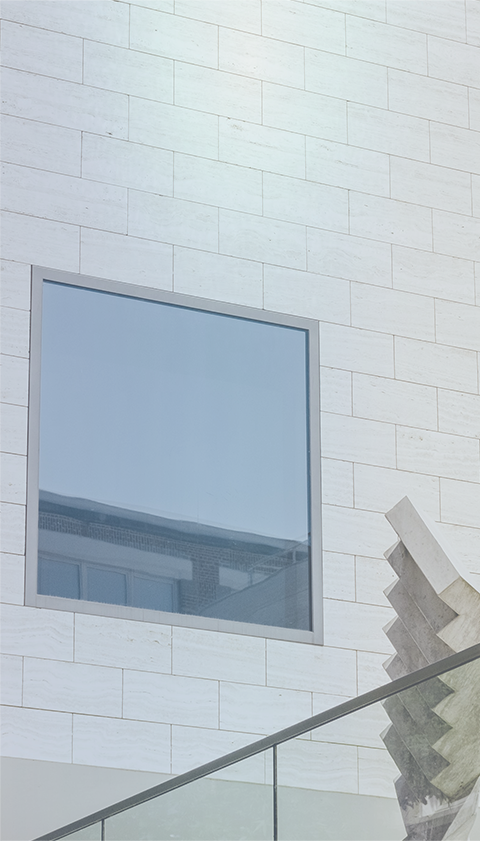Anyone looking to improve the energy efficiency of their home or retail space must, at some point, consider the effectiveness of their windows. In our opinion, the sooner the better! On average, windows make up 20% of your home. So the added heat in summer and loss of heat in winter can be costly.
At AMG Mirror & Glass, we’ve helped many customers improve the energy efficiency of their home or business by installing Low-E window coatings. These coatings are a relatively new option to control the solar energy passing through the glass.
In the article below, we’ll answer your top Low-E glass questions, including what Low-E glass is, how it’s made, and how it helps reduce energy costs.
Top Low-E Glass Questions and Answers
What Is Low-E Glass?
Low-E glass is a catch-all term to describe the coatings on specific glass surfaces. The technology behind these coatings advances yearly, so an energy-efficient Low-E glass coating from two years ago may not be as effective as one developed this year.
Low-E stands for low-emissivity. The window coatings limit how much ultraviolet and infrared light pass through the glass.
These specialty coatings are made out of a very thin layer of metallic oxide. So thin, in fact, that they can’t be seen with the human eye. Most professionals can’t even tell the difference between a normal window and one that has been treated with a Low-E Coating.
How Does Low-E Glass Work?
The energy efficiency of Low-E glass comes from the coating’s ability to keep the temperature in your home or business consistent. It does this by reflecting the interior temperature back inside while, at the same time, reflecting the exterior temperature away from the windows.
Think of how the silver lining works on a thermos. When you pour a hot drink into the thermos, the silver lining reflects the heat inside. The opposite happens when you store a cold drink into the thermos.
The metallic oxide coating on a Low-E window works the same way. It reflects light of specific wavelengths. This limits how much heating and cooling your home or business needs to output to maintain a steady temperature.

Does Low-E glass make a difference?
Low-E glass has been around for some time, and the benefits are clear. Here are some of the differences low emissivity coatings can make in your home.
- Cut Heat Loss: By saving heat from entering or exiting your establishment, you can reduce your heating and cooling loss by up to 50%.
- Lower Energy Bills: Keeping your indoor temperature stable has one other major advantage: it’ll save you money on your energy bills.
- Safeguard Furniture, Paintings, Carpets, Curtains: Less harmful UV and infrared light entering your home mean less damage to your light-sensitive materials.
How can I tell if my glass is Low-E?
Remember how we said Low-E glass coatings are thin? Well, they’re so thin that most of them can’t be detected with the human eye. Some might have a minor tint, but so do other types of glass.
But if you need to confirm your home has Low-E glass, here’s a trick.
- Grab a flashlight and point the light directly at the glass.
- Look closely at the reflections.
- A basic double-pane glass will reflect four squares of the same color. With Low-E glass, one of those reflections will be a different color.
Is all Low-E glass the same?
Low-E coatings have come a long way since their inception. Today, there are many types of Low-E and reasons to use them.
For example, you can order low emissivity coatings that remove more UV light. Then there are others that include tinting to limit the visible spectrum that passes through the pane.
To find out which Low-E coating is ideal for your home or business, contact one of our AMG Mirror & Glass experts.

How many types of Low-E glass are on the market?
Although there are many brands and specific uses for Low-E glass, there are two basic types on the market: hard coating and soft coating.
Hard coating Low-E glass, as you might have guessed, involves pouring a thin layer of molten ore onto a sheet of glass. Most companies use tin. This is the toughest to remove and lasts the longest. The downside is that the surface has a slightly blue tint.
Soft coating Low-E glass, on the other hand, requires a vacuum-sealed room. Manufacturers place the glass plane in a chamber with molecules of tin, silver, or zinc. The room is then charged with electricity and the molecules attach to the glass.
As the names and descriptions suggest, hard coatings are more durable than soft, but also tend to be more costly.
What are the disadvantages of Low-E glass?
The biggest disadvantage of Low-E glass is that more expensive to buy than regular glass. That’s why it’s best to install Low-E glass in parts of the house that get a lot of direct sunlight.
Another disadvantage is that, depending on the brand and amount of protection, there can be a reduction in visible light coming through the glass.
How long do Low-E windows last?
Windows coated in Low-E glass can last anywhere from 10-15 years. Of course, proper maintenance can add years to the lifetime of your windows. We also find that the effectiveness of hard-coat Low-E glass lasts longer in most climates.
Want to Reduce Your Energy Costs? AMG Mirror & Glass can Help
When it comes to saving money on your energy bill, every little bit helps. Low-E glass has been a cost-effective solution for many of our customers. This is especially true for homes or buildings that get a lot of direct sunlight.
To find out more about our Low-E glass product and installation process, contact us today.


